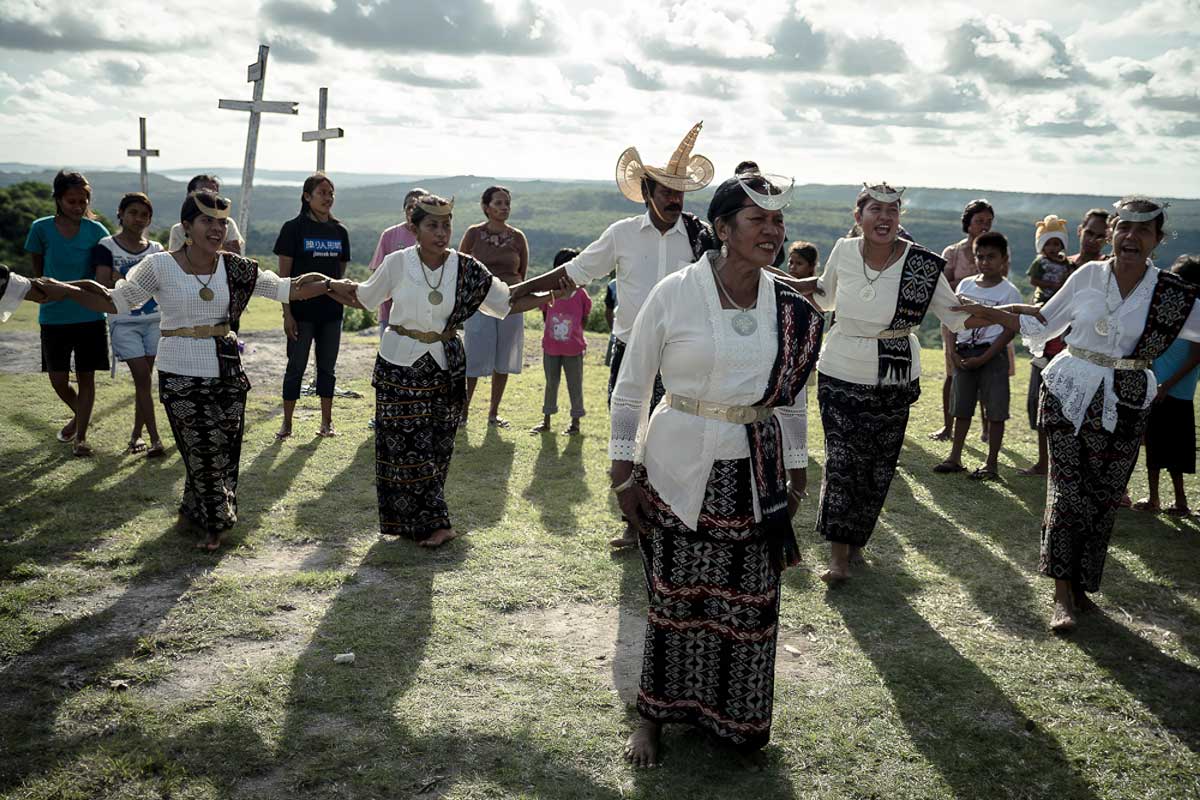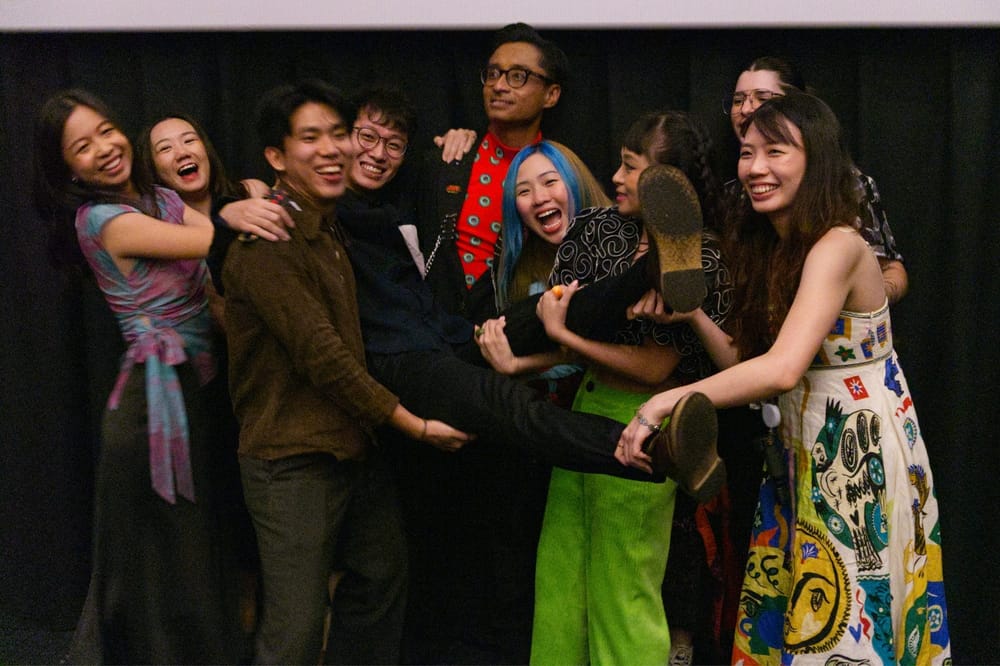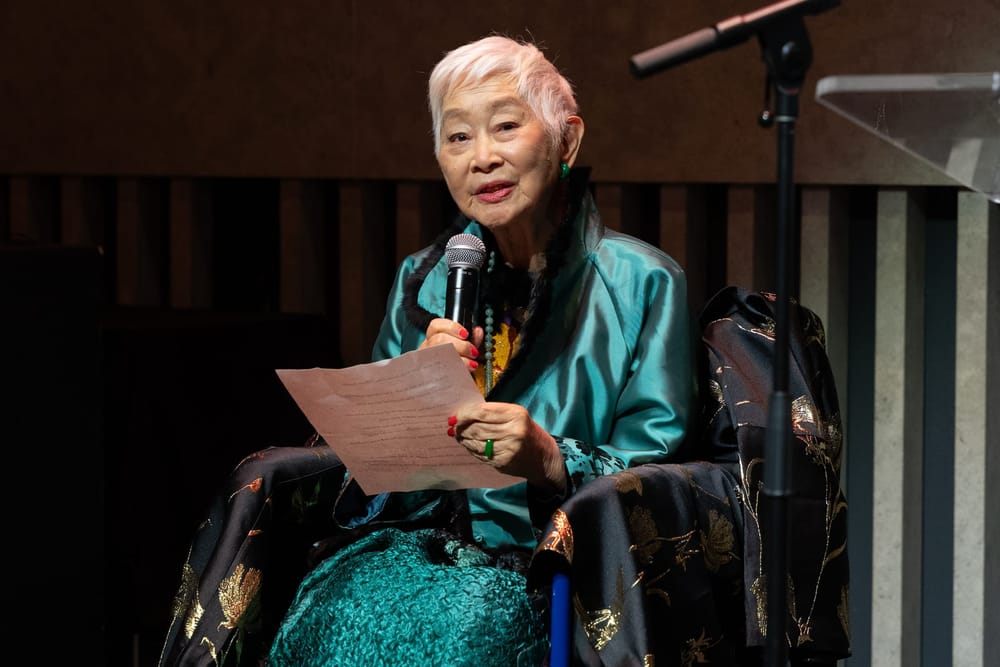By Ash Wu
“We all were born through a bloody genital,” says Orpa (Merlinda Dessy Adoe), a mother of two daughters and a member of a ramshackle village on Indonesia’s Rote Island. In this statement, she strips sentimentality from the act of childbirth and alludes to a simple truth: that we are all born from a wound. And for the women of Rote Island — who are ensconced in a patriarchy so deep that there is no viable form of escape — they carry that wound with them in perpetuity.
The suffering of local women is the hard, amber core of Jeremias Nyangoen’s directorial debut “Women from Rote Island,” titled in Indonesian as “Women of Blood.” The film racked up the accolades of Best Film at the Indonesian Film Festival and Best Indonesian Film at Jakarta Film Week, before earning a Special Mention in the Uncaged competition for Best Film at the New York Asian Film Festival.
After the death of Orpa’s husband, Abram, she allows him to go unburied for eight days — a decision that sparks the ire of her fellow community members — as she waits for her daughter Martha (Irma Novita Rihi), an illegal worker on a palm oil plantation in Malaysia, to return for the funeral.
When Martha does return, it is obvious that something nefarious happened to her while abroad. She hallucinates violence and reacts to male members of the community with fear, calling them “dakut,” or chief, in Malaysian. When she sees her father’s corpse, she greets it with an inscrutable half-smile before raising her hand and waving to it. Martha is painted as a victim of sexual violence, and she experiences it again and again through the film’s runtime as she devolves into the throes of mental illness.
Martha’s erratic behavior, which includes drawing a machete on two peeping toms and spitting into a nest to feed baby birds, leads to ostracization. Orpa herself is prone to excessive apologizing, and receives flack from her neighbors for going against tradition and leaving the house before her husband is buried. Joined by Bertha (Bani Sallum Ratu Ke), Martha’s strong-willed sister, this family trio is punished by men for their defiance: financially, sexually, and emotionally.
Paired with atmospheric wide shots of livestock traversing the island’s idyllic landscape in flocks, the message is clear: The villagers, like all other creatures on the island, must stay in line to survive. And they do stay in line. Even when it becomes reprehensible to do so.
To capture the oppression of conformity, director Jeremias Nyangoen and cinematographer Joseph Fofid turn Rote Island into a character itself. The color grading, shot through with tones of gray and green, sterilizes the tropical landscape as the camera pans over trees that look like desiccated husks of bones. Local homes exist in an uneasy symbiosis with the nature surrounding them. Wind and sunlight seep through walls. Dogs and chickens roam freely. The floors are pebbled with rocks. These reminders that nature is only a few steps away create both a feeling of intense claustrophobia indoors and a yearning for nature and the freedom it entails.
The film is at its best when it leans into elements of ethnographic study. To maintain realism, much of the cast, including Orpa, consists of Rotenese natives who have never acted before. The actors, especially Merlinda Dessy Adoe and Irma Novita Rihi, mesh subtlety with breakout moments of intense grief that lend credence to their performances. In the diegetic world, traditional songs, death rituals, and costuming adhere to local customs. However, the film gains real grit through its depictions of power exchanges between island elders and their subordinates.
After Martha takes revenge on a rapist by setting his friend’s house on fire, Orpa is forced by the elders to pay a penance of 25 million rupiah to cover the damages. Under pressure, she also shackles Martha’s legs to a pole in their house — mirroring the caging of a domestic bird to which Martha takes a liking — to prevent any further incidents. This shackling is twofold; on an island where the natives call each other Auntie and Uncle, they are bound by obligation not only to their community, but to what is effectively a big incestuous family where the men have free reign.
There are three depictions of sexual assault throughout the film and a few depictions of sexual harassment, which may trigger some viewers. The assaults are gratuitous; they feature fingernails digging into flesh, disembodied hands, bras hanging from ankles by their straps. This film is the latest in a long-running debate, traced back to Gaspar Noé’s “Irreversiblé,” on what levels of sexual violence have a place in the cinema.
That debate won’t be solved today, and should be evaluated on a viewer-by-viewer basis. However, the grief and dissociation that surround these acts of violence still wield a silent power that condemns brutality in all its forms.
The women fight back in small ways, ways they can afford to. They pour hot sauce on a rapist’s genitals. They use village customs to shame and debase perpetrators. But “Women from Rote Island” shirks the trope of the Western rape revenge film, and revenge is not served to completion. The bitter truth that justice is not always attainable runs like an electric wire under the third act, which ramps up the violence and drama.
“Women from Rote Island” is no wish-fulfillment fantasy. Set in an area that reports a disordinate amount of real-life domestic violence, the odds are stacked against these mothers and daughters to achieve retribution for their sorrows. But this is not a Western story and these are not Western odds: justice acquires a different timbre when there’s no precedent for what it looks like.
Orpa tries to rectify the injustices against her daughters in the way that only a mother could. But through all her tough love and her clear-eyed advocacy, her community’s emphasis on tradition still threatens to destabilize everything she’s worked for. Despite the inroads that she makes, she battles ancient powers beyond her comprehension. In one scene set in an empty house, one of many on the island, a faded poster hangs on the wall, which reads: “The eyes of GOD everywhere.”
Country: Indonesia
Director: Jeremias Nyangoen
Cast: Merlinda Dessy Adoe, Irma Rihi, Sallum Ratu, Wolfgang Julyanto Sili Laga, Van Jhoov
Languages: Indonesian with English subtitles
Running time: 106 minutes








